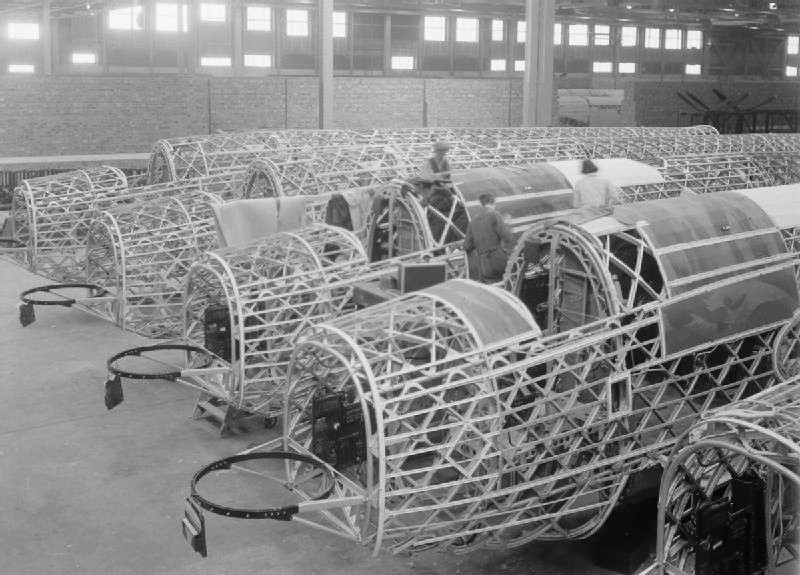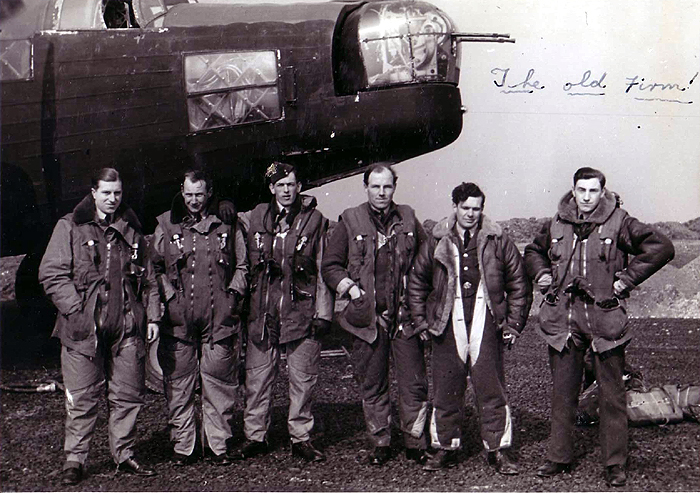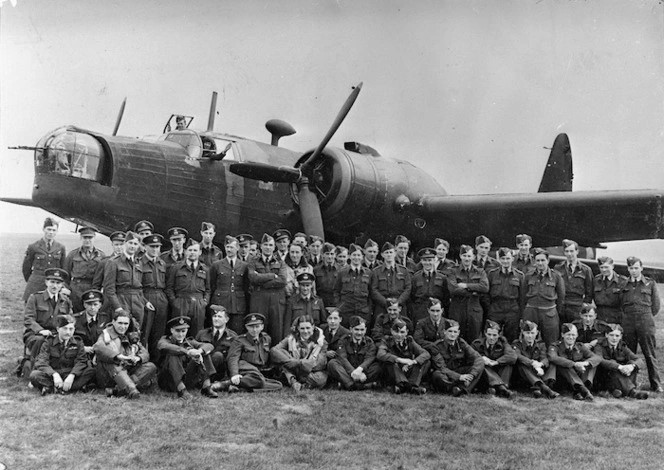Research
Research
Research
The Aircraft of Bomber Command – Vickers-Armstrong Wellington

Air to air view of a flight of five No. 75 Squadron Wellingtons, unknown location.
(Credit: Air Force Museum of New Zealand Photograph Collection)
Perhaps the most iconic of the bombers that were in service with RAF Bomber Command at the outbreak of war, the Vickers Wellington has a special connection with New Zealand.
There is the shared name with our nation’s capital of course but more significantly a New Zealand Flight had been established at Marham, Norfolk, in June 1939 to ferry 30 Wellingtons, ordered by the Government before the war for the RNZAF, to New Zealand. As hostilities broke out, these aircraft were offered back to Britain and were used to equip the newly formed No. 75 (NZ) Squadron RAF.
And it was in a badly damaged Wellington that James Ward heroically climbed on to the wing to extinguish an engine fire while returning from a raid and was subsequently awarded the VC.
The twin-engined Wellington was designed by Dr Barnes Wallis, later of ‘bouncing bomb’ fame. It was designed to a 1932 design brief for a medium daylight bomber.

Wellingtons under construction showing their geodesic structure.
(Credit: The Imperial War Museums, Public Domain)
The first Wellington was assembled in 1936, and test flown for the first time in June of that year. Quickly recognised as being an advanced design for its era and proving to have considerable merit during its flight trials, the Wellington was accepted for production, with an initial order of 180 aircraft.
Wallis’ largely unique geodesic frame, based on his experience with airships and Wellesley light bomber, proved capable of withstanding significant battle damage compared with contemporary aircraft and earned ‘Wimpys’ a respect from grateful crew for its ability to ‘make it home’ against the odds.
In October 1938, the Mk I entered service with 9 Squadron and at the outbreak of war, eigt operational squadrons within 3 Group were equpped with Wimpeys. While initially outnumbered by the Handley Page Hampden and the Armstrong Whitworth Whitley (to B.34/3 for a ‘night’ bomber) but outlasted both rival aircraft in service.
Wellingtons flew on the first bombing raid of the war, against the Greman fleet at Wilhelmshaven on 4 September 1939, although from the end of the year they were switched to night operations. It was in this mode they became the RAF’s principal night bomber until sufficient numbers of the heavies, the Stirling, Halifax and Lancaster reached squadrons though 1942.
Wellingtons were originally intended to have a five-man crew, but operationally flew missions with both five- and six-man crews. When six the positions were typically the Pilot, 2nd Pilot, Air Observer (Navigator/Bomb-Aimer), Wireless Operator, Front Gunner and Rear Gunner. When five the front gunner position was not filled.

“The old firm”, Jack Wakefield’s crew, 75Sq, 1941. From left P/O Oliver Matheson DFC, RAF (Captain), Sgt Bob Fotheringham RNZAF (2nd Pilot), Sgt Crossley RAF (front gunner), F/O George Fowler RAF (Navigator), Sgt Jack Wakefield (Rear Gunner), Sgt Robert Newton DFM, RAF (Wireless Operator). (Credit: Wings Over New Zealand)
The Wellington went on to be built in 16 separate variants, in addition to two training conversions after the war. The number of Wellingtons built totalled 11,462 of all versions, a greater quantity produced than any other British bomber.
Remarkably Wellingtons continued to be produced throughout the war and on 13 October 1945, the last Wellington to be produced rolled out.
In addition to Bomber Command operations, the Wellington was a mainstay of Bomber Command training units. And Wellingtons were also used extensivley by Coastal Command and as engine and armament test-beds.
There are two complete surviving Vickers Wellingtons preserved in the United Kingdom – Wellington IA serial number N2980 is owned by the Brooklands Museum Wellington T.10 serial number MF628 is held by the Royal Air Force Museum. This latter aircraft made the last flight of a Wellington, from Aston Down to Wisley, in January 1955.

Group portrait of the 75th New Zealand Bomber Squadron, Royal Air Force, alongside a Vickers bomber aeroplane, England.
Photographer unidentified. Evening Post (Wellington, NZ).
(Credit: National Library of New Zealand)
August 18, 2024